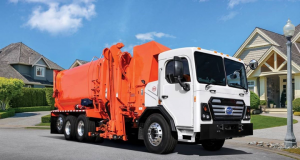(BRK.A), (BRK.B)
If there ever were two companies on a collision course for investors dollars it’s Tesla and China’s BYD (Build Your Dreams), a world leader and pioneer in battery and zero-emission vehicles.
Both companies have staked their claim as the leaders in the electrification of everything from cars to forklifts, and both companies have intrigued investors looking for explosive growth on the manufacturing side of investing.
Unfortunately, for Tesla, which lost $702 million in its first quarter and is already looking towards another capital raise in the $2.5 billion range to keep the battery-powered lights on, its overseas competitor is making money.
Lots of money.
BYD has announced that its first quarter profit skyrocketed 632 percent to 749.73 million yuan (US$111.4 million).
In the race to become number one in electric cars, BYD’s already firmly in the lead.
While US investors may pay more attention to Tesla’s US sale figures (increasingly nervously), BYD is number one in the biggest electric vehicle market in the world, China.
“New energy vehicles are expected to continue to sell well in the second quarter, and new energy vehicle sales and revenues continue to maintain strong growth,” noted BYD in its stock exchange filing.
BYD is looking even further down the road, and just signed an agreement with the city government of Changzhou city government for its fourth car factory, which will produce some 400,000 electric cars annually.
Not Just Cars, Buses
While you don’t see any BYD cars on US highways, you do see an increasing number of BYD pure electric buses. The company has made huge headway since it opened an assembly plant in Lancaster, California in 2013, and recently produced its 300th bus.
Worldwide, BYD dominates the market and has produced over 50,000 pure electric buses in just nine years.
As for the battle of the lithium-ion battery, Tesla’s Gigafactories are going head-to-head with BYD’s factories for the production crown, and for now BYD has the world’s largest.
Located in the western province of Qinghai, BYD’s 24GWh power battery factory is aiming to increase total production capacity to 60GWh by 2020. And it has the advantage that Qinghai province is a major source of lithium.
The Qinghai plant is BYD’s third battery factory in China after Shenzhen and Huizhou, and the company is constructing a fourth plant in Chongqing, which will have an annual capacity of 20 GWh.
“Electrification is a done deal as several countries have announced a deadline for the sale of internal combustion engine cars to end. Electric vehicles are on the cusp of another boom,” said BYD President and Chairman Wang Chuanfu, at the time of the Qinghai plant’s opening.
The question is whether BYD’s race with Tesla is a “done deal” as well.
BYD and Berkshire Hathaway
In 2008, Berkshire Hathaway bet on BYD’s potential, purchasing 225 million shares. It’s an investment that has paid off handsomely. Berkshire’s original investment of $230 million has grown in value almost ten-fold, and is now worth roughly $1.96 billion.
For More on BYD, read the Special Report: BYD, Berkshire’s Tesla.
© 2019 David Mazor
Disclosure: David Mazor is a freelance writer focusing on Berkshire Hathaway. The author is long in Berkshire Hathaway and BYD, and this article is not a recommendation on whether to buy or sell the stock. The information contained in this article should not be construed as personalized or individualized investment advice. Past performance is no guarantee of future results.
